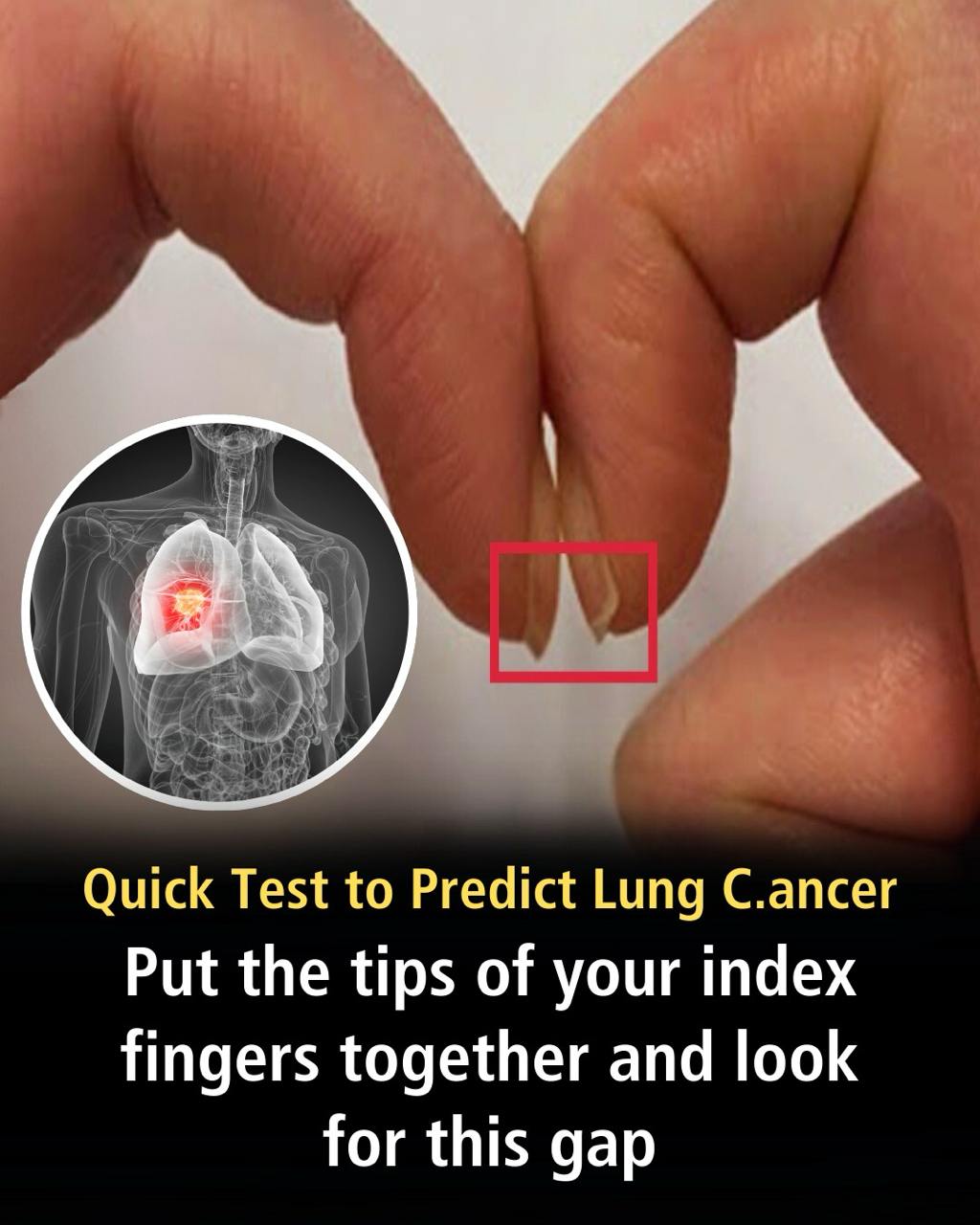Imagine being able to spot a warning sign of a serious health issue just by using your fingers. Sounds too simple to be true, right? But according to medical professionals, there’s a quick and easy test that you can do at home that might alert you to underlying conditions like lung cancer, heart disease, or other chronic illnesses.

It’s called the Schamroth window test, and while it may look like just a harmless finger trick, it can actually reveal a physical symptom known as finger clubbing—a change in the shape of the fingers and nails that’s often linked to reduced oxygen levels in the blood. Let’s break down how this test works, what finger clubbing looks like, and why it matters for your overall health. The Schamroth window test is used to check for a condition called digital clubbing. According to Medscape, digital clubbing affects the shape of the fingers and fingernails, and typically develops over time, progressing in several stages.
Cancer Research UK outlines some of the key indicators of clubbing: the nail beds may feel warmer than usual and look shiny, the tips of the fingers appear larger or bulbous, the nail beds soften, and the nails begin to curve downward like spoons. The nail beds might also feel slightly spongy when pressed. While researchers don’t fully understand what causes clubbing, Very Well Health explains that it’s believed to occur due to long-term oxygen deficiency in the blood, a condition known as hypoxemia. And though it’s just one symptom, finger clubbing has been associated with several serious health problems. For instance, studies show that about 35% of people with non-small cell lung cancer exhibit finger clubbing.
Though it’s less common in small cell lung cancer, the presence of clubbing in any case should not be ignored. Another condition strongly linked to finger clubbing is mesothelioma, a rare but aggressive cancer typically caused by asbestos exposure. This disease affects the lining of the lungs and chest, and clubbing is often observed in those diagnosed.
@dra_says Simple check at home for finger clubbing. Educational purposes only #fingerclubbing #lungcancer #lowoxygenlevels #doctor #privategp #privatedoctor #cysticfibrosis #chronicillness #crohnsdisease #cysticfibrosis #ulcerativecolitis #infectiveendocarditis #congenitalheartdiseasepatient #heartdisease #heartproblems #lungabcess ♬ original sound – Dr Ahmed
Chronic lung diseases are also on the list. Conditions like cystic fibrosis, pulmonary fibrosis, bronchiectasis, and asbestosis can all contribute to clubbing due to their long-term impact on oxygen levels in the bloodstream. Similarly, some heart conditions—particularly congenital heart defects and infections such as infective endocarditis—can lead to inadequate oxygen delivery to the body’s tissues, which may cause clubbing. Additionally, liver and gastrointestinal disorders like cirrhosis, Crohn’s disease, and inflammatory bowel disease (IBD) have been linked to this symptom as well. Performing the Schamroth window test is incredibly simple and doesn’t require any special tools.
Just follow these steps: bring your hands up in front of your eyes, press your index fingers together so the nails are touching, and look closely at the space between them. Normally, you should see a small, diamond-shaped gap between the nail beds. If that gap is missing and your nails seem to touch completely with no visible space, it could be a sign of finger clubbing. Oncology nurse Emma Norton emphasized to the Huffington Post that if you can’t see any gap beneath your nail beds, it’s worth visiting your doctor to determine whether an underlying health condition is to blame.
It’s important to note that the Schamroth test is not a diagnostic tool but rather a preliminary screening method. It’s not meant to confirm a diagnosis, but it can provide a strong reason to follow up with your healthcare provider. If you do notice changes in your fingers or nails, don’t panic—but also don’t ignore it. Early detection can play a huge role in managing or treating serious health issues. It’s amazing that something as small as your fingernails can hold clues to what’s happening inside your body. So the next time you look at your hands, take a second to try the Schamroth window test. And if it helps you catch something early—or helps a friend or loved one do the same—it’s a simple step that could make a life-changing difference.





